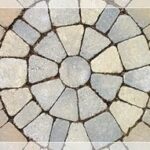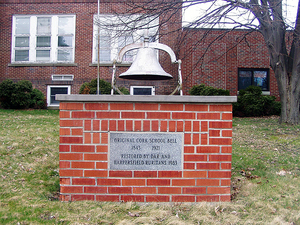There’s a good chance you’re going to damage your pavers, if you don’t know how to pressure wash them. Many pavers aren’t colorfast due to the colorant (pigment, dye) in them. Other pavers easily crumble or break. Then there’s the grout that’s often between them, which is easily damaged too, making it important to know how to pressure wash patio pavers, sidewalk pavers, and wherever pavers are used.
Lower That Pressure as Low as the Pavers
The average residential paver pressure washing job requires low pressure to remove the dirt that has accumulated on the pavers. If you have the engine raised high, so that the water pressure is high too, chances are you’re wasting water, gas and bodily energy.
Unless you’re an accomplished pressure washer who does pressure washing for a living, more than likely you’re simply not able clean as fast as the high amount of pressure coming from a pressure washer. So lower that pressure as low as the pavers, so to speak. That means you really need no more than several hundred pounds of pressure, which is about three times the amount of pressure that comes out of your average water spigot or in-home water faucet.
Specked and Flecked Because You Didn’t Detect and Inspect
Too much water pressure on a great many various pavers will pit, crumble and rarely even break pavers, particularly soft brick pavers. In New Orleans, a number of residential properties have ole’ St. Joe bricks used as pavers. These are old soft-red bricks that sometimes are more than a hundred years old. What’s great about them is these bricks were-and still are-made the way they were in the early colonial period, whereby the bricks are made using the soft-mud process in which clay is put into individual wood molds.
Tossing it to the other side, what’s not so good about these soft red bricks is how careful you must be when pressure washing them. No matter or not if it’s a soft red ole’ St. Joe brick, check the hardness of the pavers both before you start pressure washing and upon cleaning the first paver. You don’t want to start pressure washing pavers, thinking you’re doing a great job, only to realize you’ve unnecessarily deteriorated them with too much pressure.
Check the condition and thickness of grout that may be between pavers. The thicker and deeper the grout is between pavers, the more water pressure it withstands. However, many masons skimp on grout; so more times than not, you need to slightly raise your wand another inch or so from the pavers, so that when you’re moving the wand to and fro over the surface of the pavers, the more easily damaged grout won’t break and crumble while you’re cleaning the pavers (If you’re using a surface cleaning machine, simply lower the pressure, and take a little more time to clean the pavers.).
Why’s the Water Runoff so Red?
Another thing to keep in mind while pressure washing pavers is that many pavers have colorant added to them. Dyes or pigments sometimes bleed from pavers, especially when water pressure is applied. A year-long discoloration process that was slowly taking place in the pavers is suddenly a day-long devastation to the inexperienced pressure washer.
So check the colorfastness of the pavers by both dry-rubbing them and upon cleaning the first paver. Dry-rubbing a paver is a very good gauge of its colorfastness because if you can rub off color with your finger, the pavers will certainly lose color while getting pressure washed.
If very little or no colorant showed from dry-rubbing, you may choose afterward to also inconspicuously test a paver by quickly pressure washing a small spot and then looking for colorant in the water runoff. If you’re still unsure, let the paver you’ve just washed completely dry and then check its shade of color against another paver that hasn’t been pressure washed and doesn’t have dirt on it.
For a quicker, sometimes more informative conclusion, start lightly pressure washing the pavers, and as you’re doing so, closely watch the color of the water runoff. Pressure wash the pavers with even less pressure if necessary, but pavers that easily bleed colorant will assuredly do so even lightly pressure washing them.
Paver Finish
Knowing how to pressure wash pavers isn’t rocket-science, but it does require some forethought and technique. The few main things you want to check before and while pressure washing is the hardness of the pavers; the colorfastness of the pavers; and the thickness and depth of the grout in between them. Doing so effectively will result in clean, intact pavers and grout.
More Expert Pressure Washing Advice:
How to Use a Power Washer on Wood
How to Choose Chemical Injector Use in a Pressure Washer: Upstream or Downstream?
How to Pressure Wash a Patio Adjoined to a House


